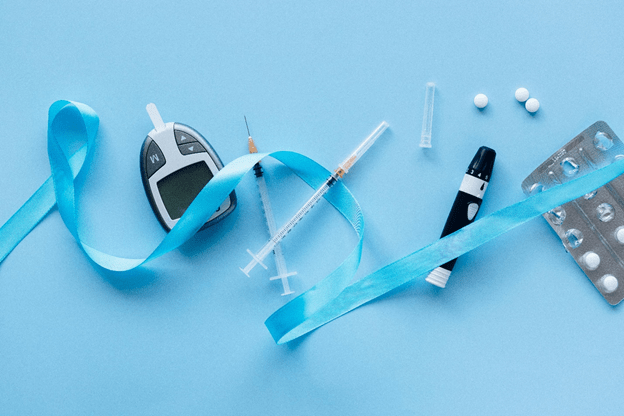Diabetes :
Diabetes is a chronic condition that occurs when blood glucose (sugar) levels in the body become too high.
There are two main types of diabetes –
1. Type 1 diabetes
2. Type 2 diabetes.
Type 2 diabetes is much more common than type 1 diabetes. In the UK, around 90% of all adults with diabetes have type 2 diabetes.
There are 4.7 million people living with diabetes in the UK. This is more than one in 15 people in the UK who have diabetes (diagnosed or undiagnosed).
The number has nearly tripled since 1996, from 1.4 million at the time. By 2025, it is estimated that 5 million people in the UK will have diabetes.
Pre-Diabetes :
Many people have blood glucose levels that are higher than normal, but not high enough to be diagnosed with diabetes.
This is sometimes known as pre-diabetes. If your blood glucose level is higher than normal, you are at increased risk of developing full-blown diabetes.
Diagnosing diabetes as soon as possible is very important because it gets progressively worse if left untreated.
When to see Doctor :
So if you develop symptoms, such as being very thirsty, urinating more often, and feeling tired all the time, you should contact your GP as soon as possible.
It is also advisable to consult your GP if you have risk factors for developing diabetes and are concerned that you may develop diabetes in the future.
Symptoms of Diabetes :
The main symptoms of diabetes are:
- Feeling very thirsty
- Urinating more than usual, especially at night
- Feeling very tired
- Weight and muscle loss
- Itching or frequent thrush around diapers or the fridge
- Cuts or sores that heal slowly
- Give a blurry look
Type 1 Diabetes :
In type 1 diabetes, the body’s immune system attacks and destroys the cells that produce insulin. As insulin production decreases or even stops altogether, your glucose levels rise, which can cause serious organ damage.
Type 1 diabetes usually appears before the age of 40, often during adolescence.
Type 1 diabetes is less common than type 2 diabetes. In the UK, it affects around 10% of all adults with diabetes. If you are diagnosed with type 1 diabetes, you will need lifelong insulin injections.
You will also need to pay special attention to certain aspects of your life and health to ensure that your blood glucose levels remain balanced.
For example, you will need to eat a healthy diet, exercise regularly and have regular blood tests.
Type 2 Diabetes :
Type 2 diabetes is where the body does not produce enough insulin, or the body’s cells do not respond to insulin. This is known as insulin resistance.
If you are diagnosed with type 2 diabetes, you may be able to control your symptoms simply by eating a healthy diet, exercising regularly, and monitoring your blood glucose levels.
However, because type 2 diabetes is a progressive disease, you may eventually need medication, usually in pill form.
Type 2 diabetes is often associated with obesity. Obesity-related diabetes is sometimes known as maturity-onset diabetes because it is more common in older people.
Diabetic Eye Test :
Every patient with diabetes aged 12 years and over should be invited for an eye examination once a year by the National Diabetes Retinal Screening Service.
If you have diabetes, your eyes are at risk for diabetic retinopathy, a condition that can lead to vision loss if left untreated.
Screening, which involves a half-hour checkup to examine the back of the eye, is a way to detect the disease early so that it can be treated more effectively

